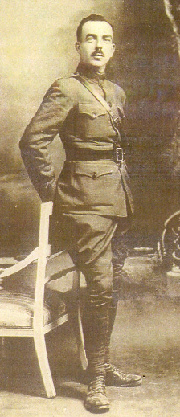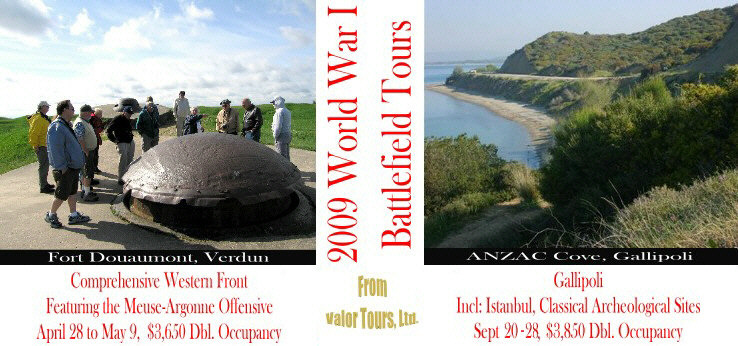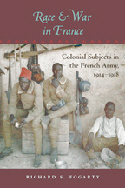Sixth Anniversary Issue
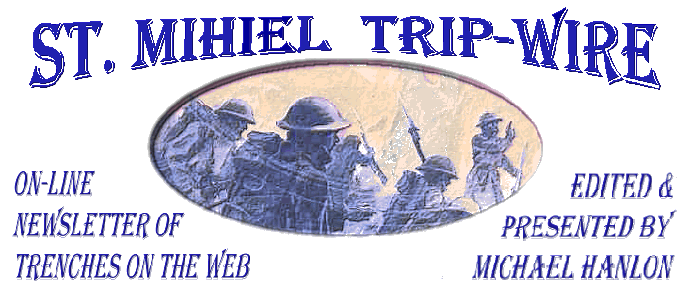
TRENCH REPORT: Another year has come and gone. Thanks for your continued readership of the Trip-Wire. This year our birthday corresponds to the 90th anniversary of the ending of the Great War. I would like to take the occasion of this double anniversary to make two requests of you. First, you'll note that at the bottom of each issue, we list the Web sites of three outstanding World War I organizations that do everything they can to maintain interest in the events of 1914-1918: the Great War Society, the Western Front Association and the League of WWI Aviation Historians. Please consider enlisting with at least one of these groups if you are not yet a member. With the centennial of the Great War now on the horizon, they are going to need help in getting out the word and making sure the sacrifices of those who fought and served are remembered properly. . .Second, I have been advised by people I trust that the Trip-Wire has just grown too darn big for its present format and is ungainly to navigate. The alternative is to shift over to the popular blog format, which would involve regular postings several times a week of new material. It would be the same content you see now, but delivered in smaller pieces throughout the month instead of one big chunk. This would spread my workload as well. For you, instead of one notice each month, you would receive an automatic message that new material is available every time I post it. I'm told the format change would also build new readers. I'm more concerned, though, about keeping my regular readers. Let me know what you think--I haven't made a final decision yet. (email) MH
This Month's Internet Feature
Great War Statistics
Mobilization Figures
The Great War in Numbers [by your editor]
Casualties
British & Commonwealth Forces
British Naval Losses in WWI
U-boat War
Spanish Flu in the USA
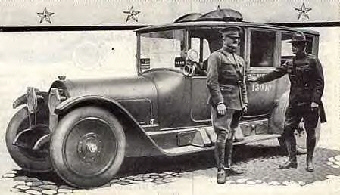
Model 48 Steam-Powered Locomobile
Used as Limousine by General Pershing
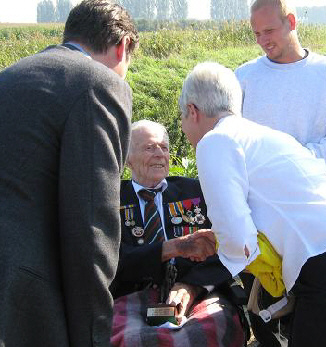
British War Veteran Harry Patch
(Story link below.)

One Reason the Schlieffen Plan Failed:
From August 1914 through the Battle of the Aisne, in 27 consecutive days the 35th Fusiliers of the German II Corps marched 408 miles, an average of 15.1 miles a day. This period included at least 11 battle days and no rest days. All marches were made under full pack.From: Infantry Tactics, U.S. Army
|
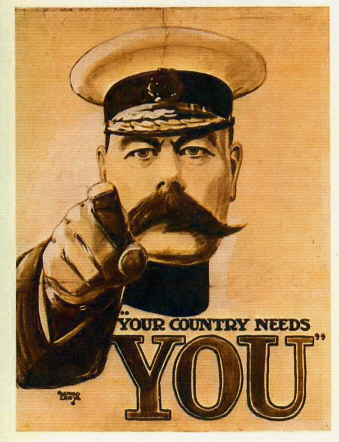
One Version of the War's Most Famous Poster
Kitchener, 1914
GREAT WAR 2008 EVENT CALENDAR
|
WWI Military History Symposium
South Carolina Confederate Relic Room & Military Museum Columbia
Lectures, Living History, WWI Authors
November 15, 2008 Email Sarah Wooton Garrod at: swooton@crr.sc.gov for information
|
Western Front Association
U.S. Branch Chapter Meetings
Check for Your Region
Regularly Updated (details)
|
Great War Society Monthly Chapter Meetings
Berkeley, San Francisco and Palo Alto, CA
Regularly Updated (details)
|
Send additions/corrections:
Email Response
|

Memorable Event
|
Armistice

Hostilities End at the
11th Hour
November 11, 1918
Click on Image for More Information
|
|
The Army Quartermaster Corps and Women's Museums at Fort Lee, Virginia are holding a special event on post commemorating the 90th anniversary of the end of World War I and honoring the nation's Veterans on November 11 from 9:00 a.m. to 4 p.m. The event is free and open to the public.
There will be a Canadian vigil honoring all the nations WWI Fallen, 4-11 November. The names of the dead will be projected on monuments across Canada. Each night, between sunset and sunrise, over 9,700 names will individually
be given their place of honour. The vigil will be streamed live to a dedicated Web site so families
can search their veteran's name and be informed of the date and time that their relative's name
will be projected, enabling them to either attend in person or watch the vigil in real time online. (link)

U.S. Cemetery, Romagne, Argonne Sector
Trip-Wire reader David Homsher announces his award-winning: AMERICAN BATTLEFIELDS OF WORLD WAR I: CHÂTEAU-THIERRY--THEN AND NOW Volume One: Enter the Yanks, is now available at a substantial discount. Visit his Web site to make your holiday gift order. (link)
My friend, Mississippi musicologist Robin Clayton, recommends this WWI Music Site to his fellow Trip-Wire readers. (link)
 But how intolerably bright the morning is where we who
But how intolerably bright the morning is where we who
are alive and remain, walk lifted up, carried forward by
an effective word.
From In Parenthesis
David Jones
|
|
Reader John Mahoney at French National Monument: First Battle of the Marne, Mondemont, France (St. Gond Marshes in Background) Photo by Connie Tibbets on Our September 2008 Battlefield Tour
|
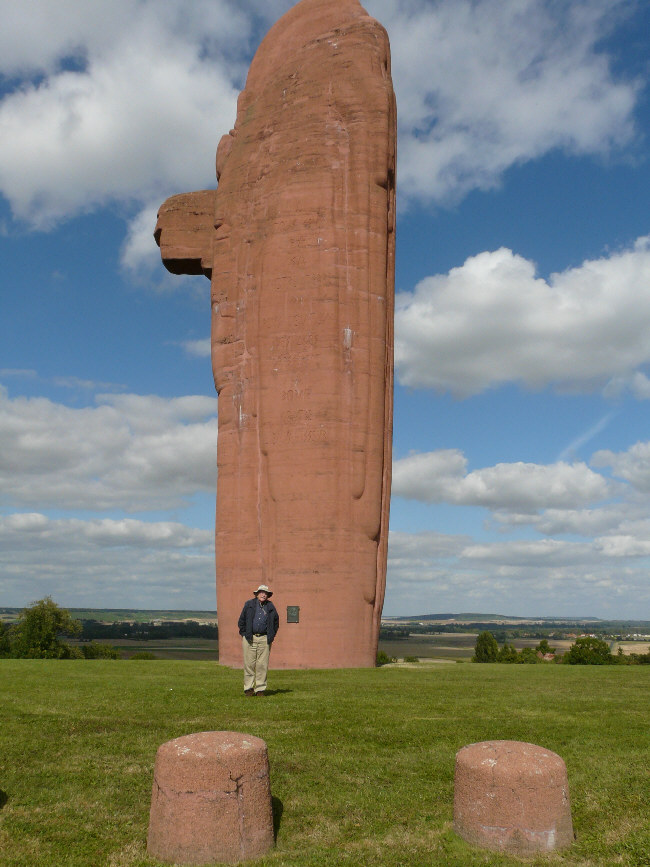
|
|
|
|
Page Two
|
|
|
Oscar and the Great War
Many Great War veterans made their way to Hollywood, and several made it to the top. Here are five Academy Award-winning actors, who won Best or Best Supporting Honors. At least four of them participated in notable First World War films.
Humphrey Bogart, U.S. Navy
Bogie served in the U.S. Navy as a security guard on troop transports. He once had to shoot a prisoner who attempted to escape. He received the Best Actor award for his performance in the adaptation of C.S. Forester's WWI story, The African Queen. His most famous military role was as the deposed Captain Queeg in The Caine Mutiny. |
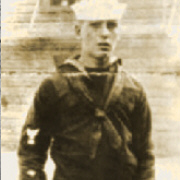 |
Walter Brennan, AEF
Served in an artillery unit with the 26th Yankee Division of the AEF where he learned to bray like a mule. Later, when he was selling real estate in Southern California and the sound of a donkey was needed on the set of a "talkie", someone remembered him, and a movie career was born. Brennan received three Best Supporting Actor awards in a long career and played Sgt. York's minister in the movie about the Tennessee Doughboy. |
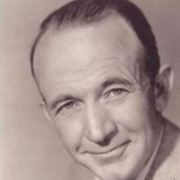 |
Ronald Colman, British
Colman joined the London Scottish Regiment before the war. Later on, according to Wikipedia, he served with fellow actors Claude Rains, Herbert Marshall and Basil Rathbone. On October 31, 1914 at the Battle of Ypres, apparently near Messines, Colman was seriously wounded and was eventually was invalided from the service. He is pictured in uniform here in the WWI tearjerker Random Harvest. He won his Oscar for A Double Life. He also played the fictional Great War veteran who turned to detective work, Bulldog Drummond. |
 |
Charles Laughton, British
After enlisting in the Huntingdonshire Cyclist Battalion, Laughton was fighting with the British Army toward the end of the war when he was gassed. It has been written [not-subtantiated, though] that the gas changed his voice, giving it its distinctive deep register. Nevertheless, the war greatly affected him, causing him to lose his religious faith. His only WWI film, The Man from Down Under, was one of the few "flops" of his distinguished career. Laughton's portrayal of Henry VIII earned him his Oscar. |
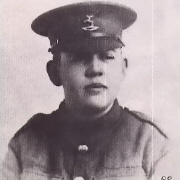 |
Victor McLaglen, British
British born, South African raised, McLaglen became something of a vagabond and an outstanding boxer prewar. When the war broke out, McLaglen joined the Irish Fusiliers and soldiered in the Middle East. When he turned to acting he won his Academy Award for the title role in John Ford's The Informer. He was also in the cast of Ford's outstanding WWI adventure film The Lost Patrol [still on right] with fellow vet, Reginald Denny, who had been an RFC/RAF pilot. |
 |
|
|

|
New Argonne Monuments
By Christina Holstein
|
There were three dedications of memorials to the American Expeditionary Force in the Argonne since September. Christina reports here on two of them. Next month we will feature some photos of the Sgt. York Educational Trail, which was dedicated outside of Chatel-Chéhéry in October.
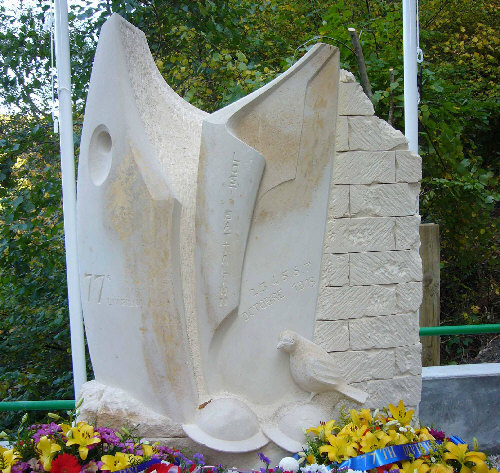
Lost Battalion Memorial
This new memorial to the Lost Battalion stands beside the road at Charlevaux, a tiny hamlet near Binarville situated in a narrow
ravine on the western side of the Argonne Forest. It commemorates an event that took place in early October 1918,
when the 77th Division, AEF, was attacking northward through the Argonne Forest. On October 2, six companies of
the 308th Infantry and parts of two companies of the 306th Machine Gun Battalion, which were under orders to push
forward without regard to progress on their flanks, penetrated through temporarily abandoned German lines and
dug in on the northern slope of Charlevaux ravine approximately half a mile ahead of the divisional front line.
Communication had been maintained with the troops in the rear, and later in the day one company of the 307th
Infantry even succeeded in moving forward to join the group in the ravine. However, the Germans pushed troops
between the main body of the division and the advanced group which, by dawn on October 3, was completely
surrounded.
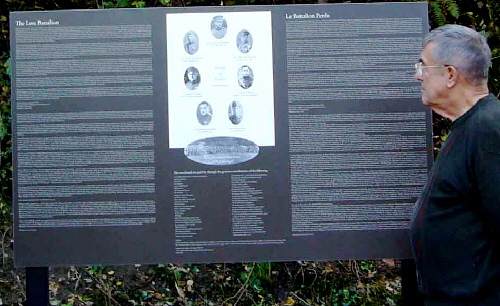
Trip-Wire Columnist Tony Noyes at the Adjacent Lost Battalion Informational Kiosk
For the next five days the little group, which quickly acquired the name of the ‘Lost Battalion’ even though its
whereabouts were known to the 77th Division, was subjected to repeated assaults involving rifle and machine gun
fire, trench mortars, grenades and flame throwers. They even suffered one devastating attack by friendly artillery
which left many dead and wounded. Their food was exhausted on the second day, and water could only be obtained
from the stream, which was exposed to German sniper fire. Ammunition soon became scarce, and the men began to
suffer acutely from hunger and thirst. Attempts to airdrop food, medical supplies and ammunition were unsuccessful,
as were the 77th Division’s efforts to relieve them. With no means of communication once their last pigeon – named
‘Cher Ami’ – had flown away with a desperate call for relief, the Lost Battalion fought on, refusing repeated German
calls to surrender. Commanded by Major Charles Whittlesey, they held out until a successful flank attack by the
American I Corps near the eastern edge of the Argonne Forest forced the Germans to withdraw their front line in
the Charlevaux area. The survivors of the Lost Battalion were finally relieved on the evening of 7 October. By then,
only about one third of the more than 600 men who had entered the valley were able to walk out of it.
The new memorial stands about half a mile as the crow flies from the hillside where these events took place. A
storyboard provides basic information about the Lost Battalion and about the supporters of the project. Further
boards to be set up in future will give a complete picture of the events that took place there ninety years ago.
Below are two photos from the inauguration of the Gunther Memorial at Chaumont-devant Damvillers last 24
September. The monument was unveiled by Jean-Marie Bockel, the French secretary of state for defense and
veterans.
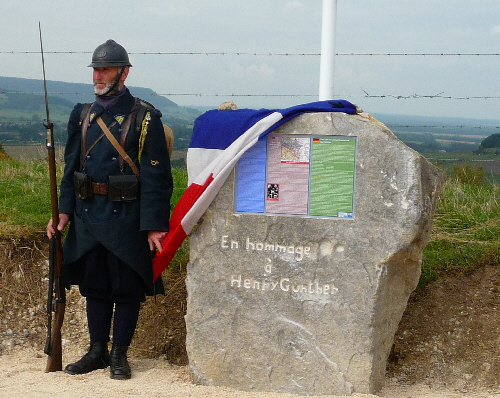
A Poilu Guards the Henry Gunther Monument
The memorial, which stands on a hilltop above the tiny hamlet of Chaumont-devant-Damvillers, Department of the
Meuse, France, commemorates Henry N. Gunther, Company A, 313th Infantry, who is officially the last member of the
American Expeditionary Force to die in combat in WWI. He was killed one minute before the Armistice, at 10:59 a.m.
on November 11, 1918. The memorial, which features a description of the event in French, German and English, was
raised on the initiative of Pierre Lenhard, a local historian, with the support of the mayor of Chaumont and the local
authorities.

Detail from the Gunther Memorial
[Editor's note: Christina is very active in the commemorations marking the 90th anniversary of the war's end. She provided information and translations for the Gunther memorial and will appear on a BBC2 event covering the war's last day to be hosted by Michael Palin and has been filming around Verdun for BBC news programming. Incidentally, she reports that President Sarkozy will be at the Verdun Ossuary on November 11 to relight its eternal flame.]
|


"U-boat Threat", Connaissance, Vol. 72
Click Here to Visit War in a Different Light
|
 |
Captain John Paul Ragsdale, 42nd Division
Contributed by MG Thomas Jones
|
|
Capt. John Paul Ragsdale, an undertaker in civilian life, was born in Johnson County, Indiana, July 23, 1890, and his family eventually settled in Indianapolis. When America entered the war he enlisted in the 1st Officer Training Camp at Fort Benjamin Harrison, Indiana and was commissioned first lieutenant and assigned to the machine-gun company with the 168th Infantry of the 42nd, Rainbow, Division. Upon arriving in France he was seconded to the British Army and served in the Loos sector with the Lincolnshire Regiment.
After returning to the Rainbow Division he commanded a machine-gun company and saw action in all the division's operations. Later, he became the Regimental Adjutant for the 168th Infantry. He was awarded the Silver Star for actions in the Aisne-Marne sector:
|
For gallantry in action, near Sergy, France, July 25-30, 1918. On several occasions with utter disregard of his own personal safety Lt. Ragsdale exposed himself to heavy enemy and machine gun and artillery fire in order to place his machine guns in a position to dislodge the enemy. |
Discharged in 1919, Ragsdale became a partner in the Ragsdale & Price Funeral Parlor and became active in professional, veteran's and Masonic organizations.
|
|

|
1918 on The Western Front
By Tony Noyes
November
The Last Men
|
[Tony is still indisposed, so we have drawn on other sources for this month's entry.]
While the various governments of the belligerents stumbled their way toward ending hostilities, the generals of the Allies pushed to gain the most advantageous positions when negotiations halted the fighting. All their fall offensive operations on the Western Front continued. On the 1st of November, the U.S. First Army, now under command of the thoroughly competent Hunter Liggett, struck a decisive blow in the Argonne sector driving the opposing forces back to Sedan and forcing major crossings of the Meuse reorienting the American forces for the planned next drive through Metz. An operation that was just beginning as the war ended.
In the British sector, Haig's army commanders were distinguishing themselves on the attack. With Canadian forces in the van, they reached Mons in Belgium, the exact position where the original British Expeditionary Force had first encountered the enemy in August 1914.
On November 10th and the morning of the 11th, with negotiations underway at Compiegne that were clearly going to result in an armistice, several attacks were launched or continued, which later resulted in criticism for the high commands. General Currie's Canadians continued advance beyond Mons and the forcing of River Meuse by the U.S. 2nd and 89th Divisions were especially criticized after the war as unnecessary.
|
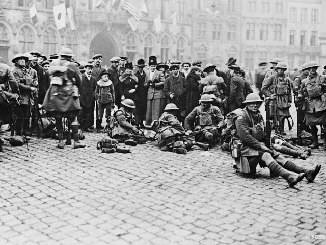
Canadian Troops at Mons November 11, 1918
Two men symbolize the tragedy of the war, being the last to fall and having been involved in some questionable attacks nearly at the moment of the war's conclusion. The Canadian 28th Battalion was fighting at Havre village near Mons when at 10:58 a.m. Private George Price was shot dead by a German sniper. A minute later, east of the Meuse River, Henry Gunther of the U.S. 313th Infantry met a similar fate. [See Christina's article above for more details about him.] These two men are generally recognized as the last two men killed in action in the War to End All Wars. Price's grave can be visited at St. Symphorien Commonwealth cemetery east of Mons. Gunther is buried at the Holy Redeemer Cemetery in Baltimore, Maryland.
|
With this issue of the Trip-Wire, Tony Noyes concludes his series of accounts of the military operations on the Western Front. We have paralleled month-by-month almost all the major battles on the Western Front exactly 90 years after they were fought. The editors wish to thank Tony for a fine job.
|
|
Subscribe to Our New On-Line Magazine
|
|

|
|
|
Page Three
|
|
|
2009 World War I Tours Led by
Trip-Wire Editor Mike Hanlon
Click on image to request a brochure from greatwar@earthlink.net
|
|
Delfino Edmondo Borroni, 110
The last Italian WWI veteran, the Bersaglieri Delfino Edmondo Borroni, (August 23, 1898 – October 26, 2008), has died at his rest home. He was Italy's oldest man. Born in the small village of Turago Bordone in Northern Italy, Borroni moved to the Milan area after demobilization and became a trolley driver there.

All Gone Now: The Men of Italy's Army
|
 |
Richard S. Fogarty's
Race & War in France: Colonial Subjects in the French Army, 1914-1918
Reviewed by Len Shurtleff
|
This is one of those rare books on France in World War I written in English by an American scholar. It is a sympathetic but unemotional treatment of an issue that continues to confront France today. This is not a racism simply arising from skin color but rather a complex and often contradictory amalgam of cultural and linguistic imperatives complicated by the tenets of colonialism and the stresses of a society viewing itself as being at war for survival.
Desperate for manpower, France (which lost 300,000 dead in the first five months of the war) was the only one of the big powers whose prewar military doctrine called for the deployment of colonial troops to Europe. Of the 8,000,000 French troops mobilized, nearly half a million came from the colonies (160,000 from West Africa alone), along with 200,000 civilian workers. Most of the colonial soldiers came from West Africa and Algeria, with smaller numbers from Indo-China and Madagascar and volunteers from the French protectorates of Morocco and Tunisia. Most were conscripts, though a concerted effort mounted in 1918 netted almost 120,000 volunteers in West Africa and Algeria, too late to affect the outcome of the war. West African, Tirailleurs Senegalais, Moroccan and Algerian soldiers were frontline infantry, while conscripts from Indo-China and Madagascar were largely support troops. These men served under conditions that placed them in an ambiguous position somewhere between hired mercenaries and full French citizens. Some French military and political leaders argued that combat service merited the award of French citizenship to these soldiers. Others asserted that the colonials owed "a blood tax" in payment for the benefits of French rule, but the consensus in French society militated against their citizenship on cultural and linguistic grounds. Colonial soldiers came from societies considered alien and primitive, were largely Muslim and spoke little or poor French. Thus, only a few dozen colonial soldiers became French citizens, though many returned to take up improved subordinate positions in the colonial hierarchy.
This, then, is an analysis of the tensions between racial and cultural prejudice (not to mention the imperatives of colonial governance) and powerful French traditions of republican universalism and egalitarianism. The author presents a fresh picture of how France dealt with these tensions while fighting and winning a total war.
Race & War in France: Colonial Subjects in the French Army, 1914-1918, Richard S. Fogarty, John Hopkins, 2006, 374 + ix pages, notes, photos, appendices, tables, maps, index, essay on sources, ISBN 0 8018 8824 7, $60 cloth. The author teaches history at SUNY Albany.
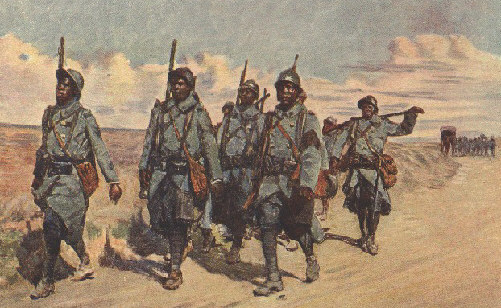
Senegalese Troops on the Western Front
For other treatments of colonial soldiers, particularly African tirailleurs whose experiences are typical of all French colonial conscripts, see:
- France, Soldiers and Africa, Anthony Clayton, Brassey's [now Potomac] (1988) ISBN 0 08 034748 7
- Colonial Conscripts: The Tirailleurs Senegalais in French West Africa, 1857-1960, Myron Echenberg, Heinemann, (1991) ISBN 0 85255 651 9.
- Native Sons: West African Veterans and France in the Twentieth Century, Gregory Mann, Duke, (2006) ISBN 0 8223 3768 1
|
|
World War I Headlines
in the
21st Century
|
|
Lew Ayres
By Andrew Melomet
When Lewis Milestone was casting for the lead role of Paul Baumer in All Quiet on the Western Front he was looking for "a brand new face." He considered several actors, including Douglas Fairbanks, Jr., and the book's author, Erich Maria Remarque. None were right. But while Milestone was looking at test shots of the soldiers in the field kitchen he found his Paul. Milestone later said, "I watched this boy. It was not even a close shot, it was kind of mid-shot. But I liked everything I saw about this guy - I liked the way he stood, I liked the way he talked and I liked the way he impressed the lieutenant with the justice of their demand." That boy was Lew Ayres (1908-1996). All Quiet on the Western Front was only his third film role.
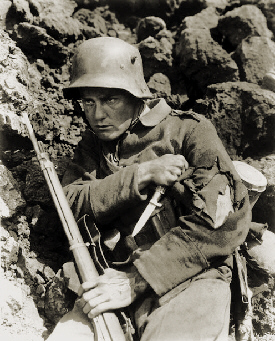
Lew Ayres in His Most Famous Role |
Lew Ayres's film career was nearly destroyed by his conscientious objection to World War II. He refused combat duty on religious grounds. He said that to bear arms would cause him "to live in a nightmare of hypocrisy." His films were banned from more than 100 theaters. Louis B. Mayer, the head of MGM, told him, "You're through in Hollywood." Ayres was currently starring as the lead character in the popular Doctor Kildare series produced by MGM. The studio actually polled the cinemas in key markets to determine if they should continue to release his films. The Doctor Kildare films continued, although Ayres was dropped after making nine films in the series, and crusty Doctor Gillespie (Lionel Barrymore) would eventually have new assistants in the remaining six films. In the early 1950s Ayres and Barrymore would be reunited for a radio series, The Story of Dr. Kildare.
Ayres's beliefs were only partially based on his involvement with All Quiet on the Western Front. He was deeply read in philosophy and religion. His beliefs were based on the New Testament and the writings of Romain Rolland and Leo Tolstoy. In a April 1, 1942 interview with The New York Times, Ayres stated that he believed in "The Christian creed of nonresistance to evil" and that he was "convinced that as like attracts like, hate generates hate, murder incites revenge, so charity and forgiveness reflect their kind, and the world's brotherhood will be made manifest not through economic experiences but through man's awakening to the irresistible power of love."
The April 6, 1942 issue of Time magazine reported that Ayres "was sent to an undisclosed camp in the West as a conscientious objector…The chairman of his draft board said We finally came to the conclusion that his objections to army service were sincere. That's about all there is to say about the matter.'" An open letter to Time magazine was published in the April 20, 1942 issue signed by John Huston, George Cukor, Mary Astor, Franchot Tone, Olivia de Havilland, George Oppenheimer, Walter Huston, Charles Lederer and Humphrey Bogart. It stated (in part): "There was nothing of either a seditious or treasonable nature in his words and action. Such being the case it is not within our own conscience to remain silent while so many voices are raised against a man who acted according to dictates of his conscience. As members of the motion picture industry we deny the representation that we are ashamed of Lew Ayres and that we would disclaim against him."
In the same issue Ayres was quoted as saying ". . .In my opinion, we will never stop wars until we individually cease fighting them, and that's what I propose to do. And I propose to proclaim a moratorium on all presumed debts of evil done to us, to start afresh by wiping the slate clean and continuing to wipe it clean. To hold no malice and so seek no revenge. To set our hearts in the right direction-and have confidence in God's beneficent wisdom to help us work out details."

As a Soldier -- Burial Marker
Ayres actually wanted to serve in the Medical Corps, but the military would not guarantee his choice of service and he declared himself a conscientious objector (CO) when he was drafted in 1942. He explained that it was his belief that killing was wrong, but he did not "mind working with the army because you do have a tremendous problem with the Hitler situation, I can't deny these things. But I said as far as I'm concerned I couldn't kill, and I couldn't go into the army even on your side unless I did what I considered to be constructive work. [The Selective Service] said no you may not make that choice, you have to go where we will put you, and I said well then I won't go at all."
He reported to a labor camp in Cascade Locks, Oregon. After working in the camp for two months the Army relented, and he volunteered for non-combatant duties and was inducted as a medic. His precedent allowed other COs to choose to serve as medical personnel or in the Civilian Public Service (CPS). Those in the CPS fought fires, worked in prisons, mental wards and hospitals. Some were used a volunteer human guinea pigs for medical research. There were 42,000 COs who refused to bear arms. Twenty-five thousand would serve as non-combatant medical corpsmen and chaplains with the military. These non-combatant medical corpsmen went into battle unarmed.
During the war Ayres eventually became a sergeant and served in the South Pacific, in New Guinea and the Philippines as a medic and chaplain's assistant with a hospital unit. Ayres was often among the first medics to enter the combat areas to treat both wounded Americans and enemy Japanese soldiers. Some of his Filipino patients recognized him as Doctor Kildare. He made first-wave landings at Leyte and Luzon, served for three and a half years and was awarded three battle stars. According to Paul Fussell, author of Wartime and The Great War and Modern Memory, "The soldiers admired Lew Ayres, actually, because he was the most publicized CO in the country… [Ayres] was the one conspicuous CO because he was a film star. And the troops I dealt with thought he was terrific. They envied him. They wished they'd thought of it."
The November 5, 1945 issue of Time magazine had a brief mention of Ayres in their Vision section. It describes "His post-discharge plans: perhaps a go at writing, producing or acting in educational and religious movies, "teaching men to understand one another." In 1954 Ayres took a world tour and wrote, produced, narrated and financed the documentary Altars of the East (1955) He would eventually produce several documentaries on the world's religions. Altars of the World (1976) won a Golden Globe award. In the early 1960s he was offered the role of Doctor Kildare on television but turned it down due to the sponsorship by cigarette manufacturers.
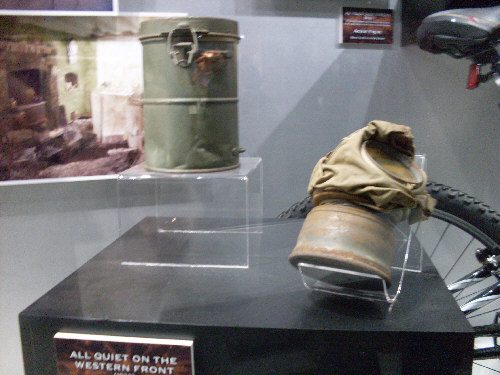
Display at Universal Studios from the Film
For authenticity, Universal Studios purchased 250 genuine German uniforms and field accessories to be used during the production of All Quiet on the Western Front. The full kit included uniform, rifle and bayonet, gas masks, spades and cooking utensils. A canteen and gas mask used during the production are on display in The Universal Experience exhibit at Universal Pictures Hollywood.
Lew Ayres is buried in the Pierce Brothers Westwood Memorial Park in Westwood, California.
"When man understands, he no longer fears
When he no longer fears, he loves;
When he loves, there is peace."
Lew Ayres
|
|
| With this anniversary issue, I'm going to cease trying to remember and thank each individual who contributes to the new Trip-Wire. I've been forgetting too many of you. Forgive me. I get tips on the telephone, via email, at meetings, the supermarket, in the regular mail and from all our regular and periodic contributors. Thanks to each and everyone of you. Until next month, your most appreciative editor, Mike Hanlon. |
SUBSCRIBE TO THE TRIP-WIRE
(Or send it to a friend)
(Or send us a comment on the TRIP-WIRE)
CLICK HERE TO CONTACT US VIA EMAIL |
For further information on the events of 1914-1918
and membership information visit the Directory Pages of:
|
| | |























